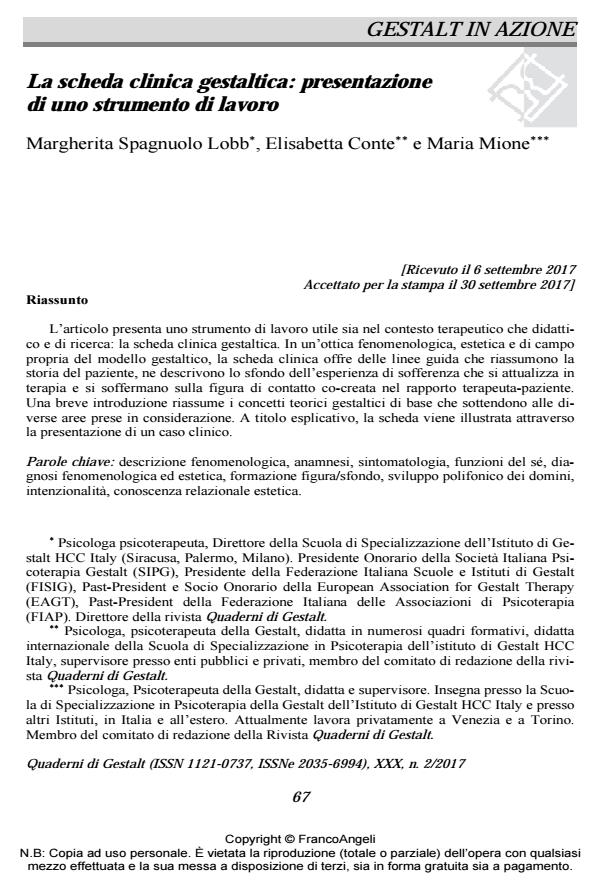The Gestalt Clinical Assessment Form: Presentation of a Work Tool
Journal title QUADERNI DI GESTALT
Author/s Margherita Spagnuolo Lobb, Elisabetta Conte, Maria Mione
Publishing Year 2018 Issue 2017/2
Language Italian Pages 15 P. 67-81 File size 234 KB
DOI 10.3280/GEST2017-002005
DOI is like a bar code for intellectual property: to have more infomation
click here
Below, you can see the article first page
If you want to buy this article in PDF format, you can do it, following the instructions to buy download credits

FrancoAngeli is member of Publishers International Linking Association, Inc (PILA), a not-for-profit association which run the CrossRef service enabling links to and from online scholarly content.
This article presents a tool useful in both therapeutic and educational settings: the Gestalt clinical assessment form. In the phenomenological, aesthetic and field perspective particular to the Gestalt therapy approach, the clinical assessment form offers guidelines that allow the summing up of the patient’s history in order to describe the ground of the experience actualised in the therapeutic setting and to consider the figure of contact, which is co-created in the patient-therapist relation. A brief introduction summarises the basic theoretical principles of Gestalt therapy underlying the form. As an example, the clinical assessment form is illustrated through a case report.
Keywords: Phenomenological description, anamnesis, symptomatology, id functions, phe-nomenological and aesthetic diagnosis, figure/ground formation, polyphonic development of domains, intentionality, aesthetic relational knowledge.
Margherita Spagnuolo Lobb, Elisabetta Conte, Maria Mione, La scheda clinica gestaltica: presentazione di uno strumento di lavoro in "QUADERNI DI GESTALT" 2/2017, pp 67-81, DOI: 10.3280/GEST2017-002005